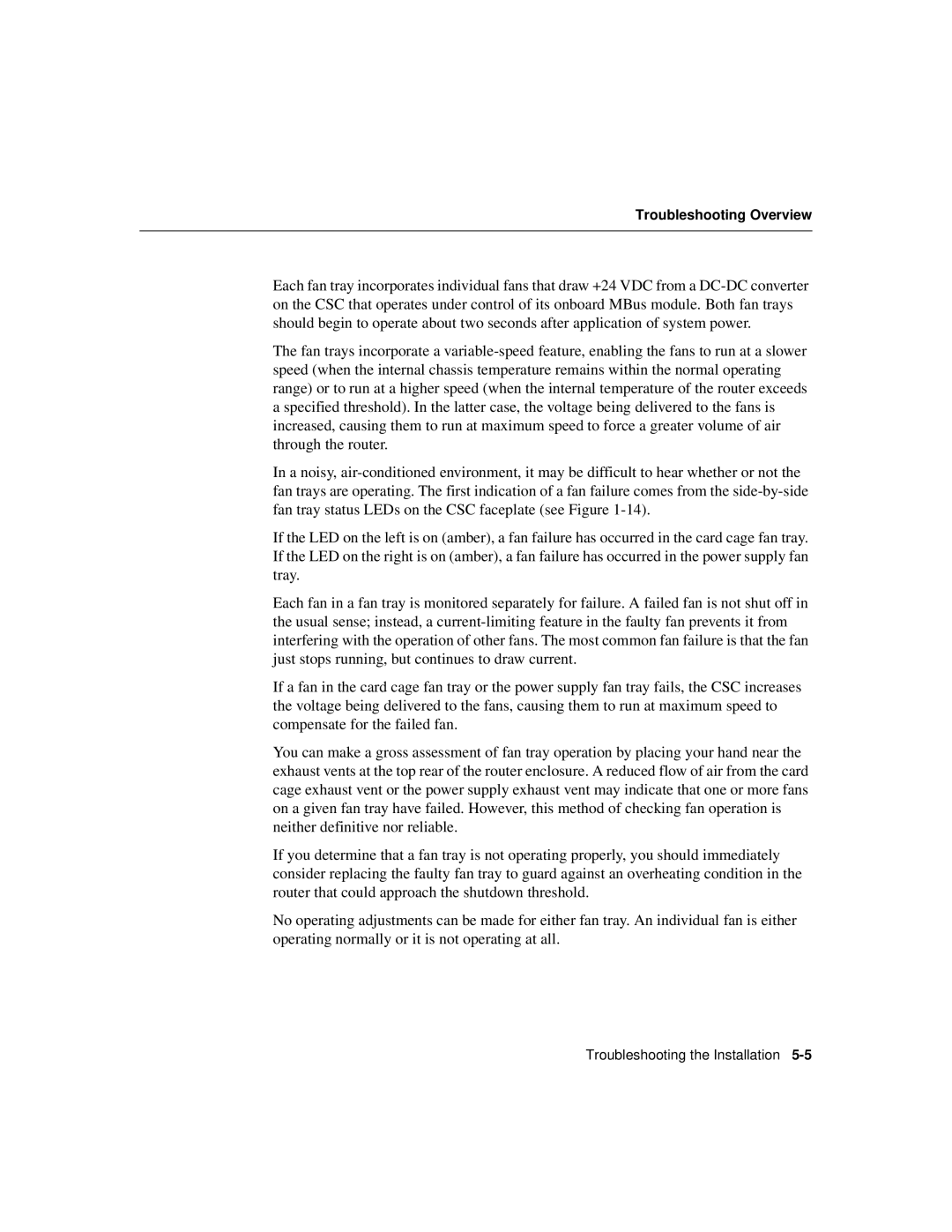Troubleshooting Overview
Each fan tray incorporates individual fans that draw +24 VDC from a
The fan trays incorporate a
In a noisy,
If the LED on the left is on (amber), a fan failure has occurred in the card cage fan tray. If the LED on the right is on (amber), a fan failure has occurred in the power supply fan tray.
Each fan in a fan tray is monitored separately for failure. A failed fan is not shut off in the usual sense; instead, a
If a fan in the card cage fan tray or the power supply fan tray fails, the CSC increases the voltage being delivered to the fans, causing them to run at maximum speed to compensate for the failed fan.
You can make a gross assessment of fan tray operation by placing your hand near the exhaust vents at the top rear of the router enclosure. A reduced flow of air from the card cage exhaust vent or the power supply exhaust vent may indicate that one or more fans on a given fan tray have failed. However, this method of checking fan operation is neither definitive nor reliable.
If you determine that a fan tray is not operating properly, you should immediately consider replacing the faulty fan tray to guard against an overheating condition in the router that could approach the shutdown threshold.
No operating adjustments can be made for either fan tray. An individual fan is either operating normally or it is not operating at all.
Troubleshooting the Installation
